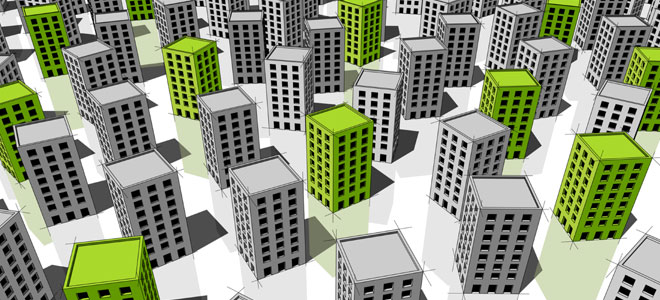According to a new study from the American Council for an Energy-Efficient Economy (ACEEE), electric heat pumps in multifamily buildings cause less than half the greenhouse gas emissions of gas-fired water heaters, presenting a key climate opportunity. The new report released this week calls for policymakers to ramp up efforts to help multifamily building owners replace older, inefficient equipment.
In residential buildings with five or more units, water heating uses more energy than space heating, cooling, or lighting, making it all the more imperative that this equipment operates efficiently. The analysis shows that converting gas-fired water heaters to electric heat pump water heaters (HPWHs) would cut resulting greenhouse gas emissions by an average of 58 per cent.
Still, replacements in multi-residential buildings aren’t expected to take-off given the higher upfront cost and lack the incentive to invest in the technology. “Gas water heaters are the biggest energy users in multifamily buildings, but most owners don’t have the incentive to switch to a more efficient electric option,” said Amruta Khanolkar, senior project manager at NBI and report co-author.
Hannah Bastian, research analyst at ACEEE and fellow co-author, added, “We need to get this critical carbon-cutting technology into millions of buildings. We need new utility programs, tax incentives, and training for contractors to install these water heaters, and quickly. Today’s natural gas prices are a reminder that relying on energy with big cost fluctuations can be a real risk for those paying the utility bills.”
According to ACEEE, if all the gas water heaters in U.S. multifamily buildings were replaced with electric heat pumps, 175 trillion British thermal units per year of energy would be saved, and sigificant greenhouse gas emissions—equivalent to what’s produced by 1.4 million passenger vehicles—would be reduced.
Electric heat pumps can also shift electricity consumption from hours of peak demand to times of low demand. They effectively serve as thermal batteries, reducing strains on the electric grid and helping enable the widespread use of renewable energy. The report finds that HPWH in multifamily buildings could together potentially store 3.5 terawatt hours of energy—an amount equal to the electricity used by 325,000 homes over a full year.
“Heat pumps not only cut greenhouse gases, but can heat the water at times when the electric grid has plenty of renewable energy and store it to be used when the grid is strained,” said Khanolkar.
That said, there are cost challenges when replacing gas products with HPWHs in multifamily applications, particularly in cold climates and regions with low gas prices or high electricity costs—hence why federal, regional, and utility financial incentives and policy changes are key to their support.
Click here for more Information: Increasing Sustainability of Multifamily Buildings with Heat Pump Water Heaters






